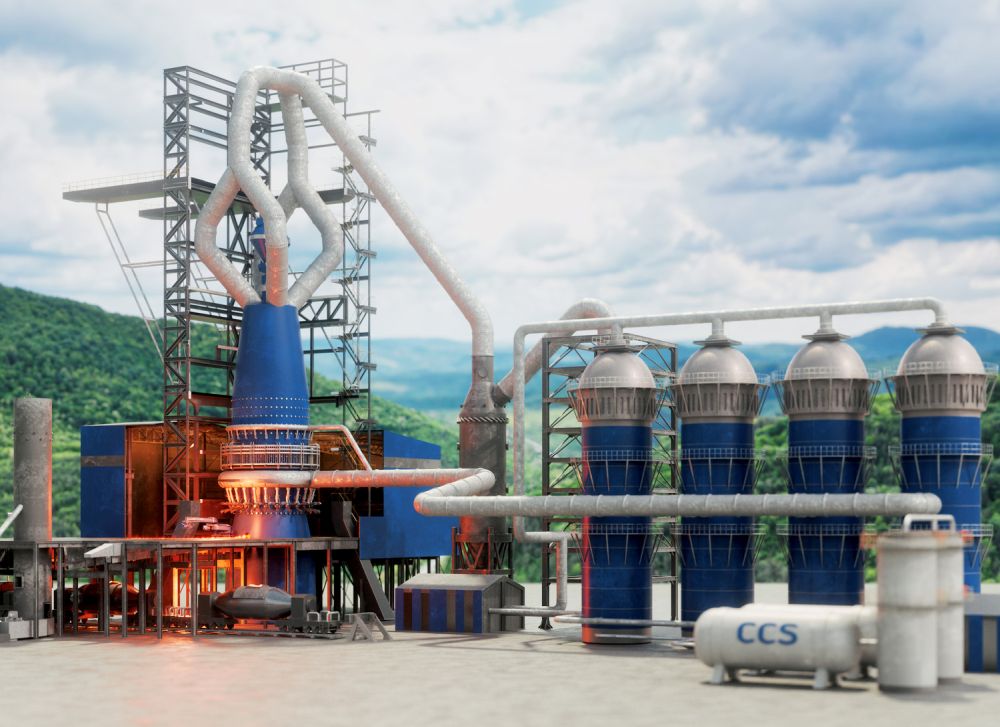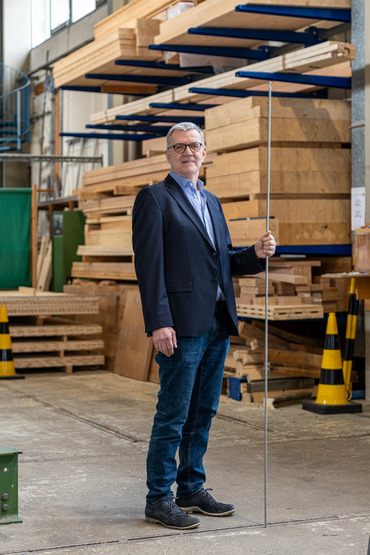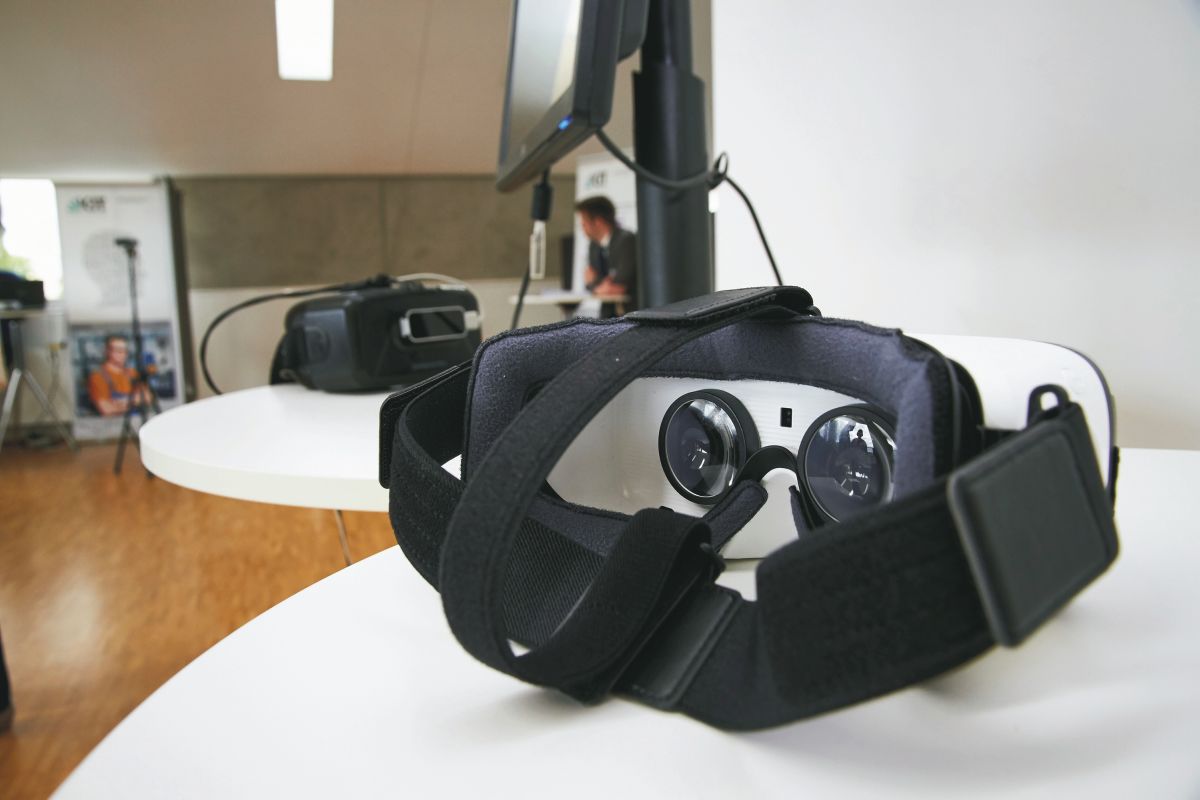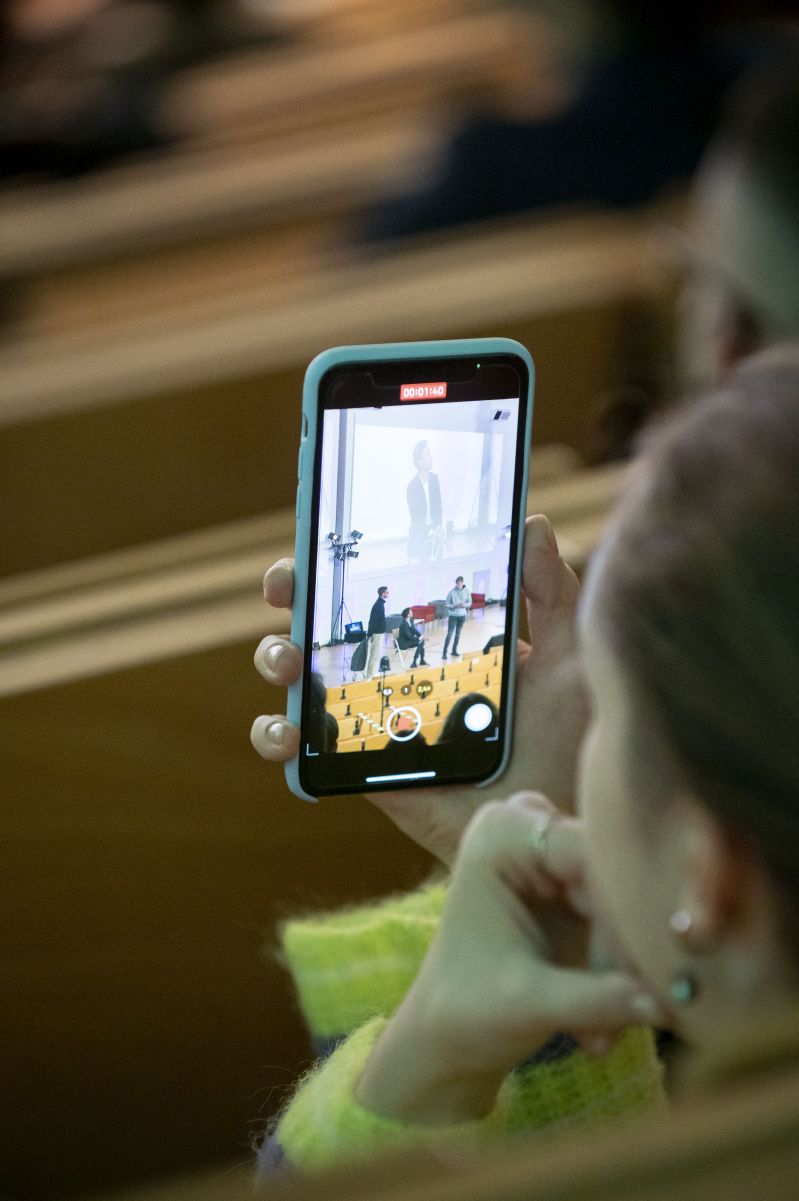Spotlight April: Changing the World – From the Past to the Present for the Future
Producing Steel More Sustainably? Now It’s Possible
The steel industry is one of the most climate-damaging industries in the world, responsible for about eight percent of global CO₂ emissions—more than the total emissions of India, a country with nearly 1.5 billion people.
But a new technology could change that. A team of researchers led by Professor Olaf Deutschmann from the Institute of Technical Chemistry and Polymer Chemistry (ITCP) at KIT, in collaboration with the company Paul Wurth, has developed a process that makes existing blast furnaces significantly more environmentally friendly. The potential impact is enormous: worldwide, this innovation could save hundreds of millions of tons of CO₂ every year.
How does it work? The key lies in rethinking how waste gases from the two most critical units in a steel mill are mixed. The coking plant produces large amounts of methane as coal is burned to make coke, while the blast furnace releases CO₂ when smelting iron ore into pig iron. The researchers developed a modified gas mixer, (Cowper) which enables methane and CO₂ to react chemically, forming synthesis gas (syngas). This syngas can then be injected into the blast furnace as fuel, significantly reducing the need for environmentally harmful coke.
A pilot project has been running in Dillingen since 2021, and the technology has since been further optimized under the name EASyMelt. According to Paul Wurth, this innovation could reduce CO₂ emissions by up to 50 percent in a conventional plant. One of the world’s largest steel companies, Tata Steel in India, has already implemented the method in one of its blast furnaces.
Deutschmann is enthusiastic: "Steel remains indispensable, but pragmatic solutions like this can quickly make production more climate-friendly. We don’t have time to wait— we have to cut CO₂ emissions now if we want to slow climate change."
Spotlight March: Spin-offs and Transfer
A screw redefines timber construction
"Why are there no long screws for timber construction?" asked Professor Hans Joachim Blaß some 20 years ago. “Short screws had been around for more than 150 years, but none from 60 centimeters to more than a meter in length," Blaß recalls. "We wanted to know if timber connections with such long screws could withstand high tensile and compressive loads. The industry was not convinced and told us at the time that there was no market for it.” Eventually, Blaß and his team found an industrial partner that provided the long screws they needed for testing.
Countless technical and scientific experiments followed - and indeed, depending on the angle at which the screws were screwed into the wood, they were able to strongly reinforce the components. This effect occurred both when the wooden elements were under compression and when they were under tension.
This innovation revolutionized the industry and paved the way for the global timber construction boom. Much larger timber structures, even skyscrapers and bridges, could be built while saving timber.
In 2010, Blaß was awarded the Marcus Wallenberg Prize - the "Nobel Prize" of the forestry and timber industry - by the Swedish King Carl Gustaf in Stockholm for his groundbreaking work. And the market has proven Blaß right: "Within 20 years, long screws have gone from being an absolute niche product to being by far the most important wood fastener," he reports.
Spotlight February: Women in Science
With VR Glasses and a Wheelchair to the Beach
How about a trip to the beach? For people without disabilities, it's usually just a matter of finding the time. But for those with limited mobility, it's far more complicated due to the lack of accessible pathways to the water. And it’s not just the real sea that poses a challenge — even virtual worlds can be difficult for people with disabilities to access. This is where the research of Kathrin Gerling, professor of human-machine interaction and accessibility and co-head of the Real-World Laboratory “Accessibility” at the Institute for Anthropomatics and Robotics (IAR) at KIT, comes in. A keen gamer herself, she wants to make virtual reality inclusive for people with disabilities, enabling experiences like a calming virtual trip to the beach.
It may be surprising, but virtual reality often isn't designed with accessibility in mind. “Hardware and game design rarely offer an immersive experience for everyone,” Gerling explains. Those who rely on wheelchairs or walking aids face obstacles – for instance, joysticks that tie up their hands. Her team is developing interactive systems that work with devices like gloves.
Gerling’s passion for this research stems from a simple truth: much of what’s designed for people with disabilities is purely functional. “But joy is just as important,” says the interaction expert, who in 2023 acquired one of the prestigious EU ERC Starting Grants for her research. “Immersing in barrier-free virtual worlds for sports, games, or leisure is a matter of justice.”
Spotlight January: 200 Years of KIT
No Smartphone Without Otto Lehmann
Solid, liquid, gas—every child learns these three states of matter in elementary school. But physicist Otto Lehmann discovered there could be a fourth state, something in between solid and liquid. January 13, 2025, marks the 170th anniversary of his birth.
Today, Otto Lehmann's pioneering research lives on in tablets and smartphones. As a professor of physics at the Technical University of Karlsruhe, he designed a groundbreaking microscope equipped with its own light source and a gas supply to heat the specimen stage. This innovative tool allowed him to closely observe the melting and crystallization behaviors of various chemical substances. Through these observations, he identified phases that exhibited properties of both liquids and crystals.
In 1904, Lehmann published his groundbreaking findings in his book Liquid Crystals. Although his work was initially mocked by his peers, scientific interest in liquid crystals resurged in the second half of the 20th century. By 1971, the first liquid crystal displays (LCDs) had been developed, cementing Lehmann's legacy in modern technology.





